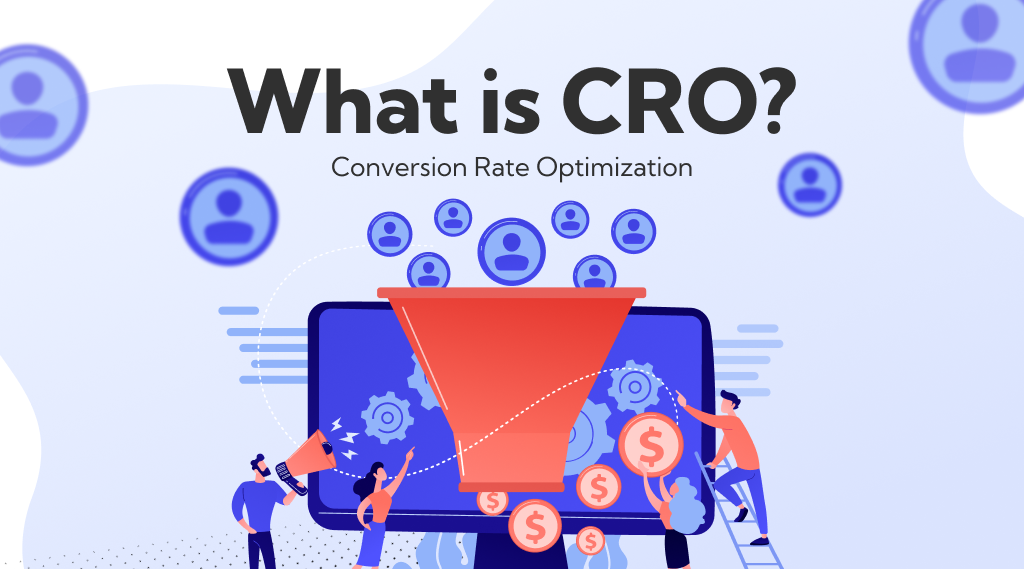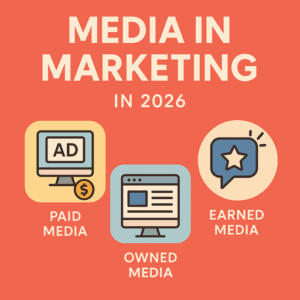As competition grows online, improving your website’s Conversion Rate (CR) is more important than ever. Conversion Rate Optimization (CRO) helps turn more visitors into customers or leads, increasing revenue without needing extra traffic. For businesses aiming to succeed in 2025, mastering CRO is essential. In this article, we’ll explore the best practices for optimizing conversion rates and improving your website’s performance in 2025.
What is Conversion Rate Optimization (CRO)?
CRO refers to improving your website’s ability to convert visitors into customers or leads. It involves analyzing user behavior, making data-driven changes, and applying strategies to enhance the user experience. By optimizing various elements of your website, you can increase the likelihood of visitors taking a desired action, whether it’s making a purchase or signing up for a newsletter.
Why is CRO Important for 2025?
As businesses adapt to changes in digital marketing and evolving user behavior, optimizing conversion rates remains a crucial goal. Simply driving traffic to your website isn’t enough in 2025—what matters is how well you convert that traffic. Here’s why CRO is a game-changer for businesses in 2025:
-
Better Return on Investment (ROI): CRO ensures that your existing traffic is working harder for you, meaning you get more conversions without spending extra on ads.
-
Enhanced User Experience (UX): CRO focuses on improving usability, making your site more user-friendly and pleasant for visitors.
-
Improved Customer Retention: Optimizing your site for conversions helps create a seamless experience that keeps customers coming back.
In short, focusing on CRO helps businesses maximize their website’s potential, driving growth and improving profitability.
Best Practices for Conversion Rate Optimization in 2025
1. Personalization is Key
In 2025, personalization is more important than ever. Consumers expect customized experiences that cater to their specific needs and preferences. Personalization can include:
-
Tailored Recommendations: Display relevant product suggestions based on browsing behavior or purchase history.
-
Dynamic Content: Show unique content or offers based on a user’s location or previous interactions with your site.
-
Customized Email Campaigns: Segment your audience and send personalized offers or content that resonate with them.
By delivering personalized experiences, you can increase the likelihood of a visitor taking action, whether it’s completing a purchase or subscribing to a newsletter.
Crecentech helps businesses harness the power of personalization, ensuring customers feel valued and understood, which ultimately boosts conversions.
2. Speed is Essential
Website speed is a critical factor for CRO in 2025. Studies show that even a one-second delay in page load time can lead to a significant drop in conversions. To optimize your site’s speed:
-
Optimize Images: Compress images and videos to reduce file sizes without compromising quality.
-
Leverage Browser Caching: Store static resources in a user’s browser cache to speed up page loading times.
-
Use Content Delivery Networks (CDNs): CDNs help deliver content faster by storing copies of your website on multiple servers worldwide.
A fast-loading website ensures a better user experience, reducing bounce rates and increasing the chances of conversion.
3. Mobile Optimization
As mobile traffic continues to grow, it’s essential that your website is optimized for mobile devices. In 2025, mobile-first design is non-negotiable. To improve mobile conversions:
-
Responsive Design: Ensure your website adapts seamlessly to various screen sizes, making it easy to navigate on mobile devices.
-
Touch-Friendly: Make buttons and links larger and easier to tap on mobile devices.
-
Faster Load Times: Mobile users are more likely to abandon a site if it takes too long to load, so speed optimization is even more critical for mobile devices.
A mobile-optimized site provides an enhanced experience and increases the likelihood that users will convert, whether they are on their phone or tablet.
4. Simplify the User Journey
The user experience should be intuitive and easy to navigate. The more complicated or confusing the process, the less likely users are to convert. Simplifying the user journey involves:
-
Clear Calls to Action (CTAs): Your CTAs should be visible and compelling, guiding users toward completing their desired actions. Use action-oriented words like “Buy Now” or “Get Started.”
-
Easy Navigation: Make sure your website’s navigation is simple and logical. Organize content so visitors can quickly find what they’re looking for.
-
Minimal Forms: Reduce the number of form fields and steps required to complete an action, such as signing up or making a purchase.
The simpler the user journey, the less likely it is that visitors will abandon your site. A streamlined process will boost conversions significantly.
5. A/B Testing for Continuous Improvement
A/B testing allows you to compare two versions of a webpage or element to see which one performs better. In 2025, continuous testing is key to maintaining high conversion rates. By experimenting with different versions of your:
-
Headlines: Test variations of headlines to see which one captures attention better.
-
CTA Buttons: Experiment with different colors, sizes, and placements for CTA buttons to find the most effective combination.
-
Landing Pages: Compare different layouts and messaging to determine which landing page generates the most conversions.
Constantly testing and optimizing your website helps ensure that you’re always improving your conversion rates.
6. Leverage Social Proof
Social proof plays a powerful role in influencing purchasing decisions. In 2025, businesses must use social proof to establish trust and credibility. This can be done by:
-
Customer Reviews: Display real customer reviews and testimonials on product pages to showcase the experiences of others.
-
Case Studies: Use case studies to demonstrate how your products or services have helped others.
-
Social Media Mentions: Highlight social media mentions, such as user-generated content or influencer collaborations, to further build trust.
Social proof is a great way to show potential customers that your product or service is trusted by others, which can increase conversions.
7. Improve Trust and Security
Trust is essential for conversion. In 2025, security remains a top priority for consumers. To build trust on your website:
-
SSL Encryption: Use SSL certificates to secure your website, ensuring customers’ personal information is protected.
-
Trust Badges: Display trusted payment options and security badges to reassure customers that your website is safe.
-
Clear Privacy Policy: Make sure your privacy policy is easily accessible and outlines how user data is protected.
When customers feel secure, they’re more likely to convert.
Conclusion
Conversion Rate Optimization is essential for businesses looking to stay competitive and thrive in 2025. By implementing best practices such as personalization, mobile optimization, simplifying user journeys, and leveraging social proof, you can significantly increase your website’s conversions.
At Crecentech, we specialize in helping businesses optimize their websites for better performance and higher conversion rates. Whether it’s through personalized content, website speed optimization, or A/B testing, we’re here to help you improve user experience and achieve your business goals.
By following these best practices for CRO in 2025, your website will be well-positioned to convert visitors into loyal customers and drive sustainable growth.









